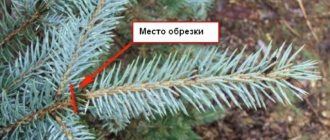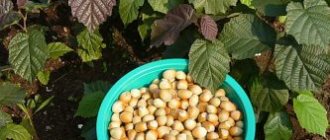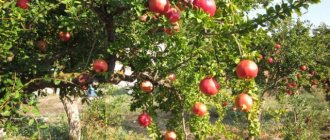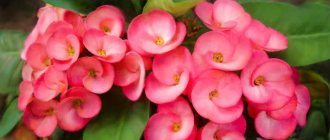The genus of willows includes more than 550 species, many of which are very decorative and have long been successfully used in landscape design - brittle, holly, basket, white... But today we will talk about another type of willow, loved by gardeners for its exceptional showiness, rapid growth and unpretentiousness.
Willow wholeleaf is the official name of this variegated beauty. Hakuro Nishiki (Hakuro Nishiki) is its most decorative garden form. Sometimes it is also called “Japanese willow” because in nature the range of the original species covers Primorye, the Korean Peninsula and Japan. Today, if you wish, you can easily plant a once exotic tree in the middle zone. Yes, even in the same Moscow region.
Description of the variety
The willow variety Hakuro Nishiki (pictured) is notable for its variegated foliage and ability to quickly form a spherical crown. The shoots are purple or olive in color and very flexible. When young leaves bloom in the spring, they are painted a soft green color; subsequently, the tops of the shoots acquire streaks and spots of a beautiful bright pinkish-white hue, due to which the variety is often used in decorative floriculture.
Unusual and bright - the Hakuro Nishiki willow will harmoniously fit into any landscape design
In hot weather, the brightly colored leaves turn slightly pale. Old leaves are usually monochromatic or with small sparse strokes of a contrasting shade. It sets earrings only in the third year on last year's shoots. The flowering shrub emits a pleasant aroma. Under favorable wintering conditions, willow of this variety can reach 3 m in height and 3 m in diameter. In the middle zone, these parameters are two times less.
Use and application
Willows are occasionally used to decorate home gardens. We can say with confidence that it was completely in vain. They grow very quickly, do not require special care and are very impressive plants. Tall varieties, of course, are not very suitable for small home gardens, but low-growing varieties and shrubs will be just in time. Willow on a trunk looks wonderful on lawns, regardless of its size. The bush is also planted near gazebos and benches. Low-growing varieties are very versatile. They can be planted anywhere and used as a hedge. When planting cuttings in a shaped manner, you can get a living gazebo, wigwam, and arches.
Hakuro Nashiki willow is good because it improves the soil and atmosphere. With its help, you can strengthen banks, erosion and embankment ravines, and cliffs. The shrub can bring bright colors to the garden at any time of the year.
Planting in open ground
Like all other varieties of whole-leaved willow, shrubs of the Hakuro Nishiki variety are quite moisture-loving; they grow best in sunny open areas or in light partial shade, where there is sun at least part of the day. In the shade, the bush will not please you with its bright pink top, the leaves will be pale and monochromatic, and the shoots will be too elongated.
Willow Hakuro Nishiki is a very unpretentious plant
Planting is usually carried out in the spring in April or May. The planting hole should not be small (average size 60 x 60), prepare it in advance, be sure to add organic matter (humus or compost), make drainage from sand or crushed stone with a layer of 20-30 cm. Excessively heavy clay soil is diluted with peat or sand. When planting, you should take into account the future size of the willow; remember, it can grow up to 3 m in diameter. When planting in groups, keep the distance between bushes at least 1-2 m. Over the next 3 weeks, the seedling should be watered very generously. To prevent the tree trunk from drying out, it is useful to mulch it with dry grass.
Attention! When purchasing a Hakuro Nishiki willow seedling from a seller, be sure to check under what conditions it was grown and whether it was hardened. Purchase seedlings with a large lump of soil and only those that have already grown in the open ground of your climate zone.
Selecting a location
All-leaf willow prefers areas illuminated by the sun's rays. You can place it in partial shade, but the stronger the shading, the less bright the foliage will be and the more the shoots will stretch out. The tree is in dire need of moisture - it feels best near bodies of water, in lowlands and in wetlands.
The place allocated for planting must be protected from winds and drafts. There are no special requirements for the composition of the soil. Both slightly acidic (pH up to 5.5) and slightly alkaline (pH 7.0-7.5) soils are suitable. If the soil is clayey and heavy, then it is enough to dig it up, adding sand and peat (1 bucket per 1 sq.m.). The plant develops best in moist, fertile soils. It does not tolerate stagnant water.
Related article:
White mulberry
Care and proper wintering
Willow variety Hakuro Nishiki is undemanding in care. To maintain a decorative appearance, you will need:
- additional regular watering during dry periods. With a lack of moisture, the leaves curl and fall off, the brightly colored tops fade, and as a result the shrub loses its decorative appearance;
- correct pruning. In late fall or winter, remove any diseased, broken or unwanted shoots. In early spring, a shaping haircut will be useful, as it stimulates the active growth of new shoots.
Willow seedlings
- sufficient feeding. Feeding of shrubs is carried out in spring, summer and early autumn. Long-acting granular fertilizer for garden shrubs gives good results. In summer, to maintain a decorative appearance, foliar feeding of the leaf mass will be additionally required.
Adult bush forms of the Hakuro Nishiki willow are quite resistant to changes in winter temperatures. But sometimes in frosty, snowless winters the shoots freeze, but without harm to the plant itself. All dead branches are cut out in the spring. The grafting site on the standard tree is considered to be the most vulnerable to freezing. It is recommended to carefully protect it from frost by tying it with agrofibre or lutrasil for the winter.
Willow propagation
The Hakuro Nishiki variety can be propagated in the spring by cuttings or grafting onto a standard willow tree.
Important! Grafted standard forms of whole-leaved willow Hakuro Nishiki are less frost-resistant than well-formed bushes of this variety.
To obtain a bush form, a simpler method is used - cuttings. Cuttings are harvested in early spring before young leaves bloom, the cut is dried and planted immediately in the ground or placed in boiled water. The cuttings take root quite quickly. The seedling blooms 3-4 years after rooting.
Willow reproduces well by cuttings
Willow whole-leaved Hakuro Nishiki: care
To grow a full-fledged ornamental shrub or tree on a trunk, you need to make some effort. This is especially true in the first year after planting, when rooting and adaptation to the new environment occur.
Watering schedule
It is unacceptable for the soil under the crop to dry out; this will lead to curling of the leaves and faded color. You need to be especially careful about hydration within a month after planting and in the summer at high temperatures. In the first years, when the crop is actively growing, two buckets of warm, settled water are watered twice a week. In addition to watering, it is recommended to spray the crown by airborne droplets in the morning or evening to prevent sunburn. It is very important to prevent excess humidity, so as not to create conditions for fungal diseases.
Fertilizer and feeding
Organic and mineral supplements will help emphasize the unique properties of the plant. Fertilizers are applied depending on the type of soil before planting when digging. Humus is added to sandy soils, and clay is diluted with peat. For 1 sq. m of soddy-podzolic soil requires 80–90 g of complex mineral fertilizers and 5 kg of compost.
Organic matter is applied no more than once every 3 years, mineral fertilizers every spring and autumn.
Nitrogen promotes plant growth. In the spring, before the buds swell, you can stimulate the shoots by spraying with a urea solution.
In autumn, fertilizers with phosphorus and potassium are used. They contribute to the formation of buds next year. Convenient forms of fertilizers in the form of granules and powder are convenient for use. The former have a prolonged effect, the latter can be scattered throughout the trunk circle and watered.
How to trim a willow tree
In early spring, before the beginning of the growing season, a compact crown is formed. The shoots are pruned, leaving at least 4 buds, and the last one should grow from the upper side of the branch. Haircut stimulates rapid growth of new shoots, and subsequently beautiful, unusual foliage color.
To maintain the ball shape during further pruning, new shoots are left longer than last year's ones by 1 or 2 buds, depending on the volume of the desired crown. The stem shoots are removed.
In summer, haircuts are done twice - in June and August. Last time in the fall for sanitary and preventive purposes.
The nuances of transplantation
Replanting a plant can be done quickly and painlessly. In order for the willow to quickly take root in a new place and not die, the following rules must be observed:
- pre-thin the crown;
- transplantation should be carried out in cool morning or evening hours in spring or autumn;
- dig to obtain a root ball;
- when planting, do not allow the roots to be compressed or bent;
- create a favorable water regime;
- mulch the surrounding area.
Gardeners replant willow from spring to autumn, but the optimal time is April, when the buds have not yet appeared on the plant.
You need to dig in the willow carefully so as not to damage the roots. If it was not possible to dig up the crop along with the earthen clod, then each root must be straightened and evenly distributed in the soil. The best age of a plant for replanting is 3–4 years.
Preparing for winter
In the fall, after the willow has shed its leaves, sanitary pruning is done, diseased or damaged shoots are removed, and the earth is dug up.
The bush type of willow is more resistant to frost than the standard type. The junction of the scion and the rootstock and the crown itself suffer from cold weather. To prevent freezing, the crop is insulated with a covering material such as lutrasil, spunbond, agrofibre. Burlap is also suitable for these purposes.
Pests and diseases
The Hakuro Nishiki variety is resistant to many known diseases and pests of willows. To prevent fungal infections, it is recommended to treat the bush crowns twice with any systemic fungicide in the spring. For young specimens, the most dangerous thing is the larvae of the beetle, which can gnaw 20-30 cm of the root system of a plant in a day. Therefore, in mid-April, for preventive purposes, treat the willow seedling with any preparation containing imidacloprid. After 40-50 days, it is recommended to repeat the treatment.
Application in landscape design
Spreading willow bushes or small standard trees of the Hakuro Nishiki variety look especially beautiful in single plantings surrounded by an emerald lawn. It is often used for landscaping coastal areas of artificially created reservoirs, city parks and public gardens. In group plantings it is an excellent shade for plants with dark green foliage. If you regularly remove all thick shoots, making room for the active growth of young branches, then the standard tree will take on the appearance of a large dandelion.
How to prune a willow correctly: video
Iva Hakuro Nishiki: photo
Propagation by cuttings - advice from a specialist
Information on preparing and rooting cuttings is taken from a video about Japanese willow.
- Take cuttings in the spring before the plant begins to actively grow . This way you will cause the least harm and ensure the best survival rate.
- Place the cuttings in a container of water and add root stimulator . After 2 weeks you will have roots, as in the photo. Soak the sprouts in water for at least a month.
- Plant the cuttings in pots with fertile soil . Carry out the work carefully so as not to damage the fragile roots. Water the plants generously to help them establish in their new location.
Propagation by cuttings is described in detail in the video











